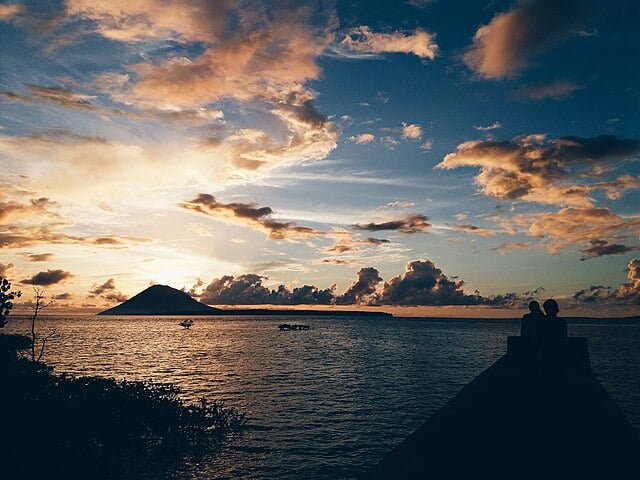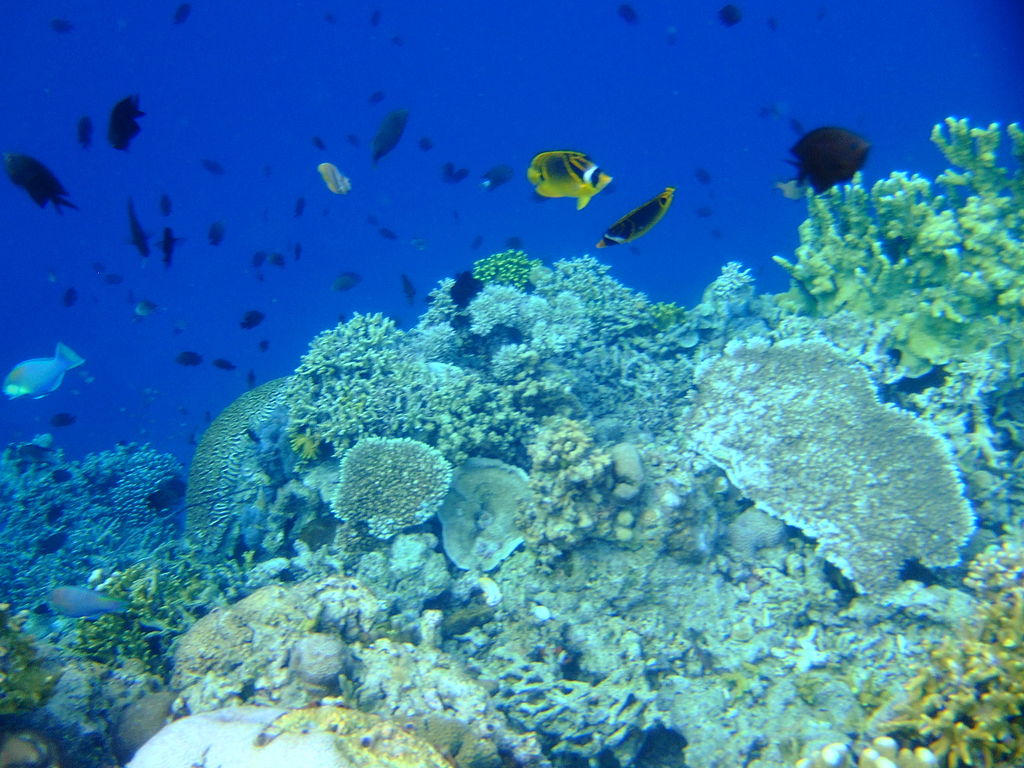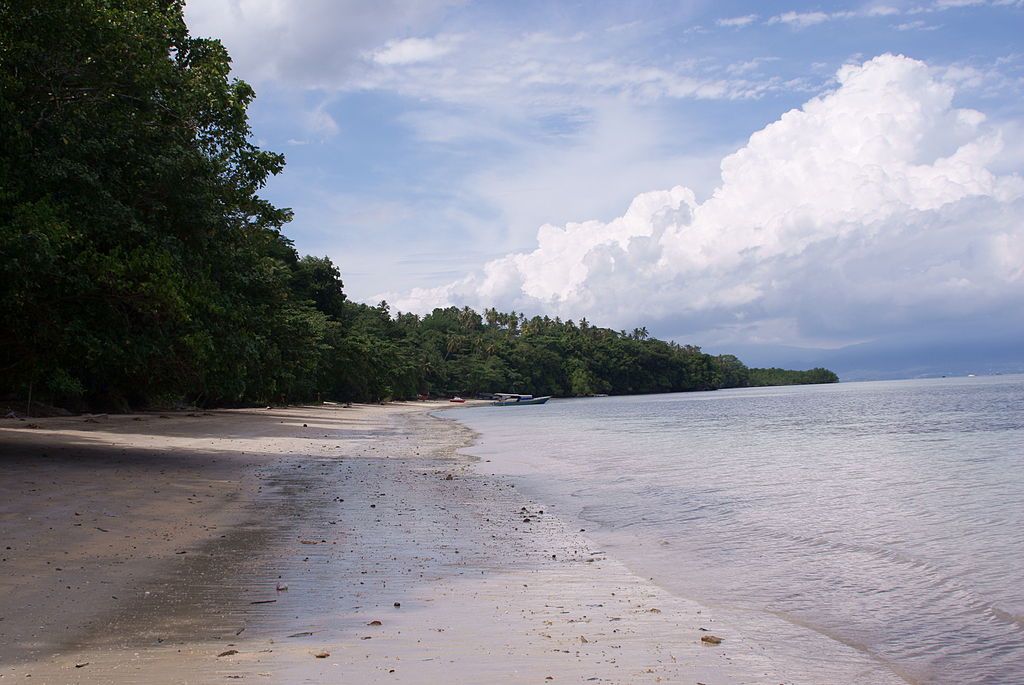Sulawesi Travel Guide: Unveiling the Hidden Gems of Celebes
Embark on an unforgettable journey through the captivating landscapes and rich cultural tapestry of Sulawesi with this comprehensive Sulawesi Travel Guide.
Sulawesi, also known as Celebes, is a diverse and captivating island in Indonesia. Divided into distinct regions, each part of Sulawesi offers its own unique attractions and experiences. Here’s a guide to help you explore this fascinating island.
South Sulawesi – Rich Culture and Natural Wonders
In the Sulawesi travel guide, you’ll find a plethora of amazing destinations and attractions. Here’s what to visit in South Sulawesi:
1. Tana Toraja
Immerse yourself in the unique culture of Tana Toraja. Visit traditional villages, witness intricate funeral ceremonies, and explore ancient burial sites. This village is known for its unique burial rituals and traditional architecture. Visitors can learn about Toraja culture and see traditional Toraja houses, known as tongkonan.

The highlands of Tana Toraja. Schwarzenfelder, CC BY-SA 4.0, via Wikimedia Commons
Opening Hours and Prices:
- Tana Toraja: The village is open to visitors from 8:00 AM to 5:00 PM daily. Check with local guides for specific event schedules and pricing.
How to Get There::
- Tana Toraja: Take a scenic drive from Makassar, approximately 8-10 hours. The village is located about 300 kilometers (186 miles) from Makassar City. Visitors can take a bus or van from Makassar to Rantepao, which takes about 10 hours. From Rantepao, visitors can take a taxi or angkot to Toraja Village.
Tana Toraja, located in South Sulawesi, Indonesia, is a region known for its rich cultural heritage, stunning landscapes, and unique traditions. Here’s a closer look at what makes Tana Toraja a remarkable destination:
Unique Traditions and Ceremonies:
Tana Toraja is renowned for its elaborate funeral ceremonies, which can last for days or even weeks. These ceremonies are considered among the most important events in Torajan culture. They involve intricate rituals and the sacrifice of water buffalo, which hold significant cultural symbolism.
Ancient Burial Sites:
One of the most striking features of Tana Toraja is its traditional burial sites. These sites, known as “Lemo” and “Londa,” consist of cliff-side graves and burial caves where the deceased are interred. Intricately carved effigies known as “Tau-Tau” guard the resting places.

Wall cemetery in Tanah Toraja is a cultural cemetery in tanah toraja that located in the wall, the wooden statue symbolize the people that pass away. Neisyaranifauzia, CC BY-SA 4.0, via Wikimedia Commons
Breathtaking Landscapes:
The natural beauty of Tana Toraja is awe-inspiring. Rolling hills, lush rice terraces, and dramatic cliffs contribute to the region’s stunning scenery. The landscape is perfect for outdoor activities like trekking and exploring the countryside.
Traditional Villages:
Tana Toraja is dotted with picturesque traditional villages characterized by distinctive Torajan architecture. The houses, known as “Tongkonan,” are adorned with ornate carvings and boat-shaped roofs. Visiting these villages offers a glimpse into the daily life and customs of the Torajan people.
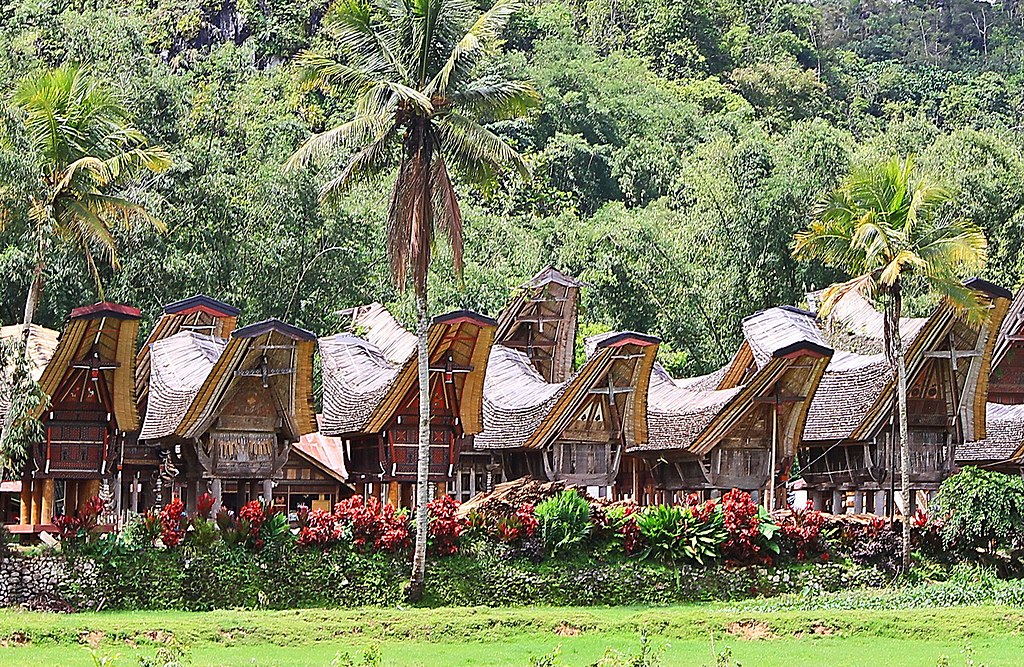
The Tongkonan house is a traditional Toraja house, South Sulawesi. In front of the house are lined with buffalo horns, which show the social status of the house owner. Duduhsadarachmat, CC BY-SA 4.0, via Wikimedia Commons
Local Handicrafts and Souvenirs:
Tana Toraja is known for its intricate handwoven textiles and unique handicrafts. Visitors have the opportunity to purchase these locally-made items as souvenirs, supporting the livelihoods of the Torajan artisans.
How to Get There:
The most common way to reach Tana Toraja is by flying into Makassar, the capital of South Sulawesi. From Makassar, it’s possible to take a scenic drive to Tana Toraja, which typically takes around 8-10 hours.
Visiting Tips:
- It’s recommended to hire a local guide who can provide valuable insights into Torajan culture and traditions.
- Respect local customs, particularly during funeral ceremonies, by observing and following any instructions given by hosts or guides.
- Bring comfortable footwear for exploring villages and potentially hilly terrain.
Tana Toraja offers a unique cultural experience in a breathtaking natural setting. Visitors to this region of South Sulawesi are sure to be captivated by its rich traditions and stunning landscapes.
From Bali to Tana Toraja | Complete Guide to Visit South Sulawesi
2. Bantimurung-Bulusaraung National Park
Discover the “Kingdom of Butterflies” in this park. Marvel at stunning waterfalls and observe a diverse range of butterfly species.
Opening Hours and Prices:
- Bantimurung-Bulusaraung National Park: Open during daylight hours. Entrance fees may apply.
How to Get There
- Bantimurung-Bulusaraung National Park: Accessible by car from Makassar, around 2-3 hours.

Rammang-rammang karst in Bantimurung-Bulusaraung . Rammang-Rammang is one of the villages in Maros district, South Sulawesi which is in the Bantimurung-Bulusaraung National Park area. This village, which is only inhabited by a dozen heads of families, has extraordinary charm because of its natural landscape. Chafidwahyu, CC BY-SA 4.0, via Wikimedia Commons
Bantimurung-Bulusaraung National Park, located in South Sulawesi, Indonesia, is a natural wonderland known for its diverse flora and fauna, stunning waterfalls, and unique limestone formations. Here’s a closer look at what makes this national park a must-visit destination:
Kingdom of Butterflies:
Bantimurung-Bulusaraung is often referred to as the “Kingdom of Butterflies” due to its incredible butterfly population. The park is home to hundreds of species, making it a paradise for butterfly enthusiasts and nature lovers.
Stunning Waterfalls:
Within the park, you’ll find several beautiful waterfalls, including the renowned Bantimurung Waterfall. Surrounded by lush greenery, these cascading falls provide a serene and picturesque setting for visitors.
Caves and Karst Formations:
The park is characterized by its limestone karst formations, creating a unique landscape of caves and caverns. Exploring these caves, such as Goa Maria and Goa Batu, offers an intriguing glimpse into the natural geology of the area.
Maros Pangkep Karst Forest
Maros Pangkep Karst Forest is listed in UNESCO Global Geopark, located in South Sulawesi, Indonesia, is a remarkable natural wonder. This expansive forest is known for its stunning limestone karst formations, which rise majestically from the ground, creating a breathtaking landscape.
What to Explore:
- Karst Towers: The most prominent feature of Maros Pangkep is its towering limestone formations. These unique geological structures have been shaped by natural processes over millions of years.
- Caves and Caverns: The karst forest is home to numerous caves and caverns, some of which contain ancient cave paintings. One of the most famous caves is Leang-Leang, where you can witness prehistoric artwork dating back thousands of years.
- Butterfly Garden: Within the forest, you’ll find a butterfly conservation area. It’s a delightful place to observe various species of butterflies fluttering amidst the natural surroundings.
- Cultural Sites: Maros Pangkep is also rich in cultural heritage. You can explore traditional villages and learn about the local way of life.

Hand paintings made by ancient humans in Pettakere Cave, Maros, South Sulawesi. The age and material of this prehistoric painting cannot be ascertained. According to estimates, it is 39,900 years old and was made from stone and earth. Sabjan Badio, CC BY-SA 4.0, via Wikimedia Commons
How to Get There:
Maros Pangkep Karst Forest is located about 40 kilometers north of Makassar, the capital of South Sulawesi. You can hire a local guide or take a guided tour to ensure you explore the area safely and responsibly.
Visiting Tips:
- Wear comfortable clothing and sturdy shoes for exploring the forest and caves.
- Bring a hat, sunscreen, and plenty of water, as the area can get quite hot and sunny.
- Respect the natural environment and cultural sites by not disturbing wildlife or ancient artifacts.
- It’s a good idea to hire a local guide who is familiar with the area, as they can provide valuable insights and ensure your safety.
Maros Pangkep Karst Forest offers a unique opportunity to witness the wonders of nature and explore the rich history of the region. Whether you’re an adventure seeker or a nature lover, this extraordinary destination in South Sulawesi is sure to leave a lasting impression.
Rich Biodiversity:
Bantimurung-Bulusaraung is home to a wide range of plant and animal species, including various orchids, ferns, and diverse wildlife. Birdwatchers will also find plenty of opportunities to spot avian species in their natural habitat.
How to Get There:
The national park is located approximately 50 kilometers north of Makassar, the capital of South Sulawesi. Visitors can hire a local guide or take a guided tour to ensure a safe and informative exploration of the park.
Green river at the Bantimurung National Park. 22Kartika, CC BY-SA 3.0, via Wikimedia Commons
Visiting Tips:
- Wear comfortable clothing and sturdy footwear for exploring the park’s trails and caves.
- Consider bringing insect repellent to ward off mosquitoes, especially near water sources.
- Pack a picnic to enjoy amidst the natural surroundings, or check with local guides for nearby dining options.
Bantimurung-Bulusaraung National Park offers a unique opportunity to immerse yourself in the natural beauty and biodiversity of South Sulawesi. Whether you’re captivated by butterflies, fascinated by caves, or simply seeking a peaceful escape into nature, this national park has something special to offer every visitor.
3. Wakatobi
Wakatobi is an archipelago located in Southeast Sulawesi, Indonesia. The name “Wakatobi” is an acronym derived from the four main islands in the archipelago: Wangi-Wangi, Kaledupa, Tomia, and Binongko. This remote and pristine area is renowned for its incredible marine biodiversity and is considered one of the top diving destinations in the world.

The floating village of Bajo tribe on the island of Wangi-Wangi, Wakatobi National Park, South East Sulawesi. Pambudiyoga, CC BY-SA 4.0, via Wikimedia Commons
The name “Wakatobi” comes from the four main islands it’s made up of – Wangi-wangi, Kaledupa, Tomia, and Binongko.

Daily Activity Bajau Tribe in Bajau Sampela Village, Wakatobi Indonesia. BastianKyle, CC BY-SA 4.0, via Wikimedia Commons
Wakatobi National Park
Wakatobi National Park encompasses the marine territory surrounding these islands and is known for its stunning coral reefs, vibrant marine life, and crystal-clear waters. Divers and snorkelers flock to Wakatobi to explore its underwater wonders, which include a wide variety of fish species, colorful corals, and even rare and endangered marine creatures.

Installing coral transects (to monitor corals) on Tomia Island in Wakatobi National Park. Fakhrizal Setiawan, CC BY-SA 4.0, via Wikimedia Commons
The islands of Wakatobi
The islands of Wakatobi are relatively isolated, providing a tranquil and peaceful atmosphere for visitors. The archipelago’s natural beauty and ecological significance have earned it a reputation as a UNESCO Biosphere Reserve.

Sousu beach located in the island of Wangi-Wangi, Wakatobi National Park, South East Sulawesi. Pambudiyoga, CC BY-SA 4.0, via Wikimedia Commons
How to reach Wakatobi?
To reach Wakatobi, travelers typically fly to Matahora Airport on Wangi-Wangi Island, which serves as the main entry point to the archipelago. From there, they can access the other islands within Wakatobi, each offering its own unique diving spots and natural attractions.
To get to Wakatobi, you’ll likely first fly to Makassar (Ujung Pandang Airport) or Kendari Airport from big cities in Indonesia. Then, you’ll catch another flight that takes you directly to Wangi-Wangi. Another option is flying to Bau Bau on Buton Island, and from there, you can take a boat to one of the islands in Wakatobi.
Keep in mind that Lion Air now offers a direct flight from Jakarta to Wangi-wangi, but it’s available only on specific days.
Once you arrive at the Wakatobi airport, it’s on the other side of the island from the city. You’ll need to arrange transportation to the city, either by taxi or ojek. It might take around 30 minutes to wait for one, and then another 30 minutes for the ride into town.
Whether you’re an avid diver, a nature enthusiast, or simply seeking a remote and pristine getaway, Wakatobi offers an unforgettable experience in the heart of Indonesia’s marine biodiversity hotspot.
Central Sulawesi – Natural Beauty and Serene Lakes
What to visit in Central Sulawesi?
1. Lake Poso
Enjoy the tranquility of Lake Poso. Swim in clear waters, go kayaking, and relish the serene surroundings.
Opening Hours and Prices:
- Lake Poso: No specific opening hours. Local activities may have separate pricing.
How to Get There:
- Lake Poso: Accessible by car from Poso or Tentena, approximately 2-3 hours.

Siuri Beach at Danau Poso (Poso Lake), near Tentena. Kondephy, CC BY-SA 4.0, via Wikimedia Commons
Lake Poso, nestled in the heart of Central Sulawesi, Indonesia, is a hidden gem known for its serene beauty, crystal-clear waters, and tranquil surroundings. Here’s a closer look at what makes Lake Poso a special destination:
Tranquil Waters and Scenic Beauty:
Lake Poso is renowned for its calm, emerald-green waters, which stretch out against a backdrop of lush hills and mountains. The serene atmosphere makes it an ideal spot for relaxation, swimming, and enjoying the natural surroundings.
Outdoor Activities:
The lake offers opportunities for various water-based activities, such as kayaking, paddleboarding, and fishing. Adventurous visitors can explore the lake’s perimeter by renting a boat or taking a guided tour.
Lore Lindu National Park Connection:
Lake Poso is located near the renowned Lore Lindu National Park, which is home to diverse wildlife and ancient megalithic sites. Visitors to Lake Poso can also explore this neighboring natural wonder.
Cultural Encounters:
Around Lake Poso, you’ll find small villages inhabited by the local Pamona people. Engaging with the community provides a chance to learn about their traditional way of life and customs.

Poso Lake from Padamarari (is in a hilly area with geographical contours following the west side of Lake Poso). Bagas Chrisara, CC BY-SA 4.0, via Wikimedia Commons
Birdwatching Paradise:
The lake and its surrounding areas are a haven for birdwatchers. Bird enthusiasts can spot various species, including endemic and migratory birds, making it a delight for ornithologists and nature lovers.
How to Get There:
Lake Poso is located approximately 10 hours by road from Palu, the capital of Central Sulawesi. Visitors can also choose to fly into Poso and then travel to the lake by car. Palu airport (PLW) called Mutiara SIS Aljufri Airport
Visiting Tips:
- Pack appropriate clothing for outdoor activities and consider bringing a hat and sunscreen to protect against the sun.
- Respect the local communities and their cultural practices. Engage with them in a courteous and considerate manner.
Lake Poso provides a peaceful retreat for those seeking natural beauty and tranquility. Whether you’re interested in outdoor adventures or simply want to unwind amidst breathtaking scenery, this hidden gem in Central Sulawesi offers a memorable experience for all who visit.
From Palu airport to Lake Poso
From Ujung Pandang Airport to Lake Poso
2. Palu Valley
Nestled between lush mountains, the Palu Valley offers stunning views, serene lakes, and opportunities for outdoor activities like hiking and birdwatching.
Opening Hours and Prices:
- Palu Valley: No specific opening hours. Check with local guides for activity costs.
How to Get There:
- Palu Valley: Drive from Palu city, around 1-2 hours.
Palu Valley, situated in Central Sulawesi, Indonesia, is a picturesque region known for its stunning landscapes, serene lakes, and opportunities for outdoor adventure. Here’s a closer look at what makes Palu Valley a remarkable destination:
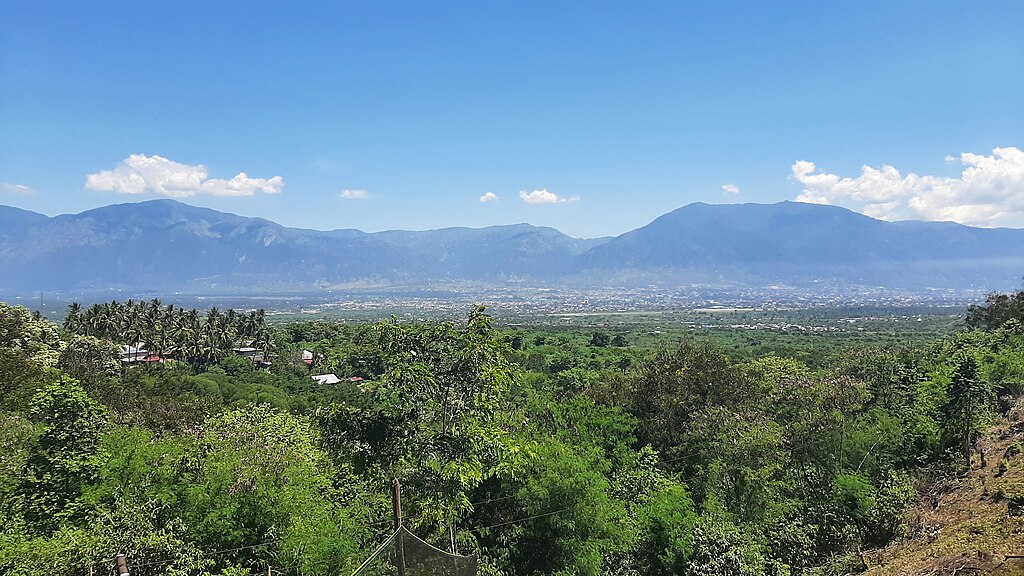
The view from Taura Kapopo Sigi, we can see Palu Valley, Palu Bay, Palu City from Taura Kapopo which is 314 meters (1030 ft) above sea level. Just 15 minutes from the outskirts of town. Johntaufan, CC BY-SA 4.0, via Wikimedia Commons
Palu City
Palu City is situated along the scenic coast of Palu Bay, offering picturesque views of the sea and the surrounding mountains. The city’s coastline is dotted with beaches, making it a popular spot for relaxation and water-based activities.
The Palu City is known for its diverse and delicious cuisine, influenced by the rich culinary traditions of Central Sulawesi. Visitors can savor local specialties such as “Mie Kering” (dried noodles), “Bagea” (traditional cakes), and fresh seafood dishes.
The city is home to various cultural sites and landmarks that reflect the heritage of the local communities. The Central Sulawesi Grand Mosque, with its distinctive architecture, is a notable religious and architectural landmark in the city.
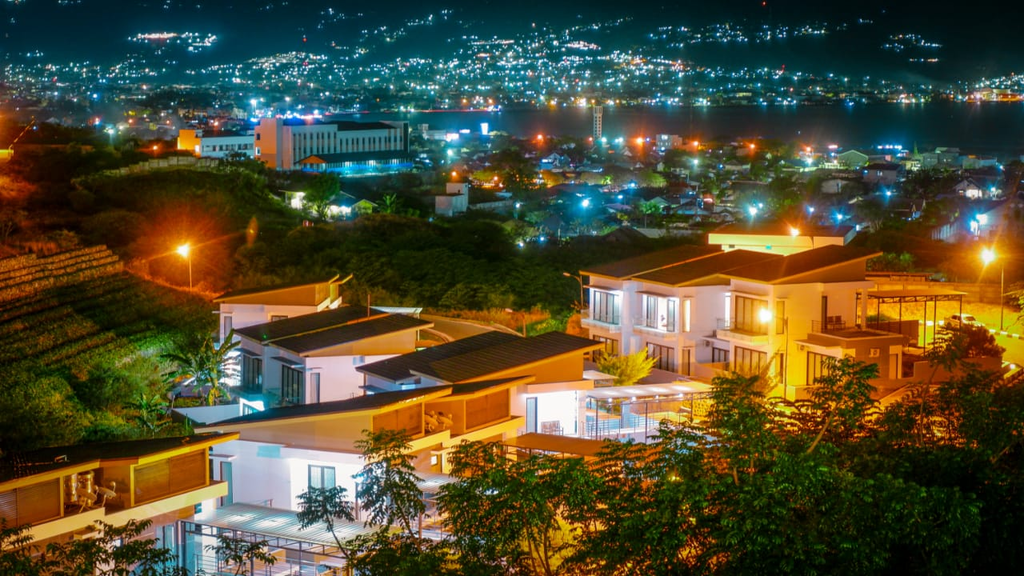
Palu city, seen at night. Palu City Government, Public domain, via Wikimedia Commons
Serene Lakes and Scenic Beauty:
Palu Valley is home to several tranquil lakes, including Lake Poso and Lake Lindu. The calm waters are surrounded by lush greenery and offer a peaceful setting for relaxation and water-based activities.

Tambing Lake, located in Lore Lindu National Park, Indonesia. Bagas Chrisara, CC BY-SA 4.0, via Wikimedia Commons
Rice Terraces and Agriculture:
The valley is characterized by its terraced rice fields, a testament to the agricultural practices of the local communities. These terraces not only contribute to the region’s picturesque beauty but also provide sustenance for the inhabitants.
Hiking and Outdoor Activities:
The surrounding hills and mountains offer opportunities for hiking and trekking. Exploring the trails allows visitors to immerse themselves in the natural beauty of the valley and witness the diversity of flora and fauna.
Cultural Encounters:
The valley is inhabited by various ethnic groups, each with its own distinct culture and traditions. Engaging with the local communities provides a chance to learn about their way of life and participate in traditional activities.
Lore Lindu National Park Connection:
The valley is in close proximity to Lore Lindu National Park, a UNESCO Biosphere Reserve. Visitors can extend their exploration to this protected area, which is renowned for its biodiversity and ancient megalithic sites.
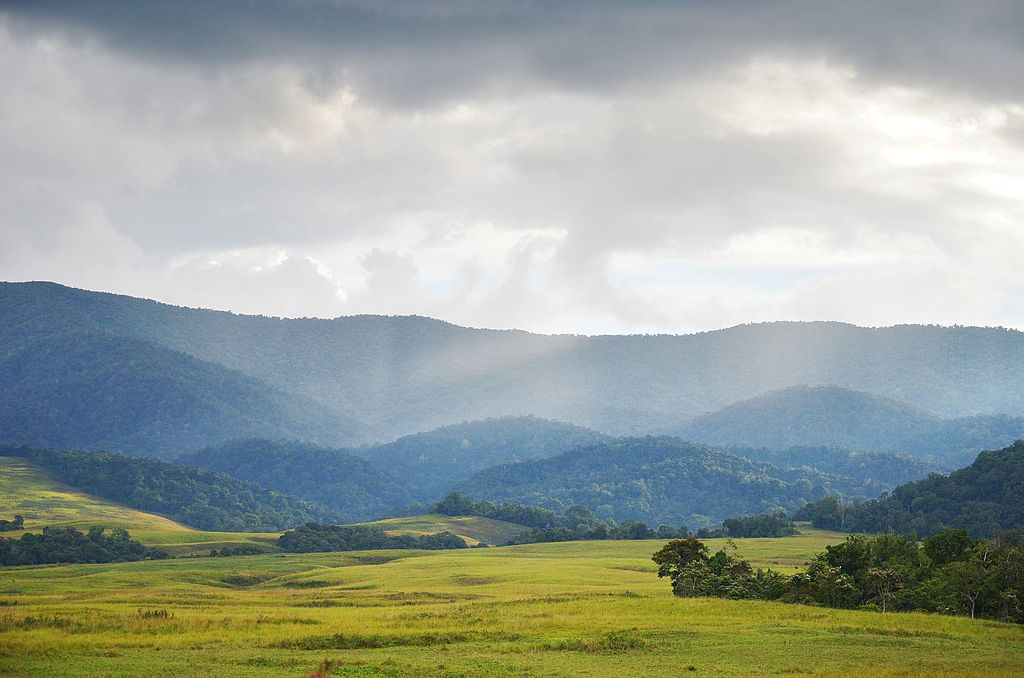
Besoa valley in Lore Lindu National Park. In addition to having biodiversity, the Besoa Valley also has a variety of unique cultural heritage remains such as megalithic statues, kalamba, dakon stones, stone mortars, gemstones, stone umpaks, menhirs, grave jars, and so on. It was explained that every megalithic site complex found is generally composed of andesite rock with the size of the elements varying depending on the function of the elements. Romi Hidayat1986, CC BY-SA 4.0, via Wikimedia Commons
How to Get There:
To reach Palu Valley, visitors can fly into Palu airport (PLW) called Mutiara SIS Aljufri Airport, the capital of Central Sulawesi, and then travel by road to the valley. The journey offers scenic views of the surrounding landscape.
Visiting Tips:
- Wear comfortable clothing and sturdy footwear for outdoor activities like hiking and exploring the countryside.
- Respect the local customs and traditions of the communities you encounter during your visit.
Palu Valley invites travelers to immerse themselves in the natural beauty and rich culture of Central Sulawesi. Whether you’re seeking outdoor adventure or a tranquil retreat amidst breathtaking scenery, this valley offers a memorable experience for all who explore its wonders.
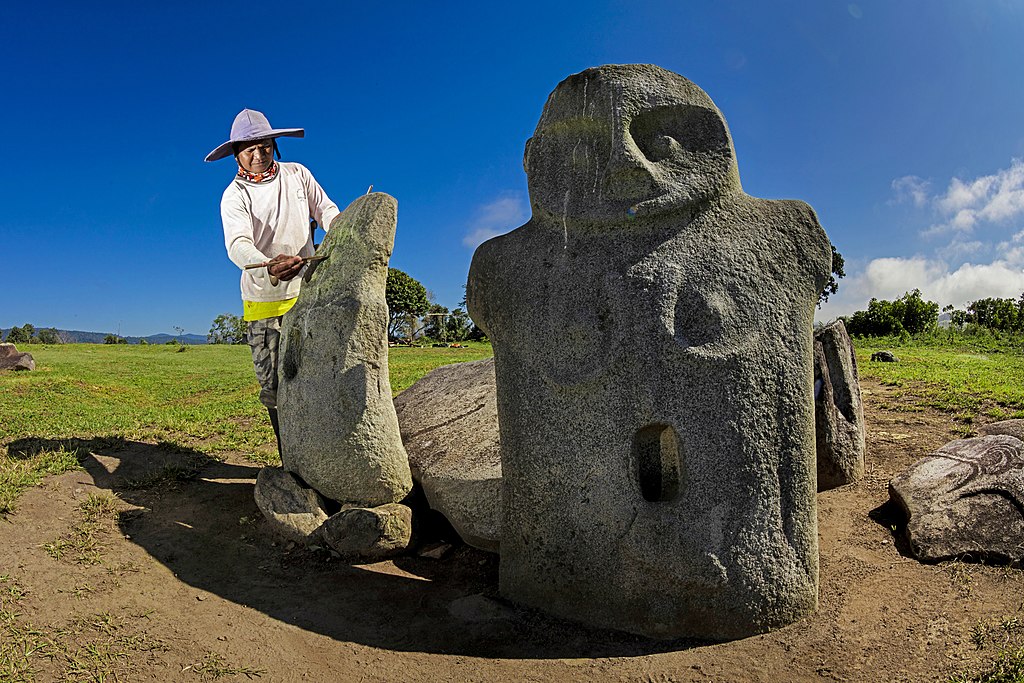
A Megalith statue in Lore Lindu National Park. These megaliths are located in the Telawi Mountains morphological area with 5 spatial units: Napu Valley, Behoa Valley, and Bada Valley which are included in Poso Regency, as well as Palu Valley and Lake Lindu in Sigi Regency. Most of the remains are in Lore Lindu National Park. Apart from being the oldest in Indonesia, the Lore Lindu Megalithic also has a distribution of megalithic remains which are closely related to past beliefs. Ganjarmustika1904, CC BY-SA 4.0, via Wikimedia Commons
North Sulawesi – Marine Wonders and Wildlife Encounters
What to visit in North Sulawesi?
1. Bunaken National Park
Dive into an underwater paradise. Explore colorful coral reefs and an abundance of marine life in this renowned national park. This world-renowned national park is home to an incredible diversity of marine life, making it a popular destination for diving and snorkeling.
Opening Hours and Prices:
- Bunaken National Park: The park is open from 8:00 AM to 5:00 PM daily. Check with local dive operators for specific diving times and pricing.
How to Get There:
- Bunaken National Park: Take a boat ride from Manado, approximately 30-45 minutes. The park is located about 15 kilometers from Manado. Visitors can take a boat from Manado to the park, which takes about 30 minutes.
Bunaken National Park, located off the coast of North Sulawesi, Indonesia, is a marine paradise renowned for its vibrant coral reefs, diverse marine life, and world-class diving opportunities.
Bunaken National Marine Park, Manado, Indonesia. Sakurai Midori, CC BY-SA 3.0, via Wikimedia Commons
Here’s a closer look at what makes Bunaken National Park a must-visit destination for underwater enthusiasts:
Vibrant Coral Reefs:
Bunaken is celebrated for its stunning coral reefs, which are among the most biodiverse in the world. The park boasts a rich tapestry of corals in various shapes, sizes, and colors, providing a breathtaking underwater landscape.
Diverse Marine Life:
The park is home to an astounding array of marine species, including colorful fish, turtles, rays, and even reef sharks. Divers and snorkelers have the opportunity to witness this underwater ecosystem up close.
World-Class Diving Sites:
Bunaken offers numerous world-class diving sites, each with its own unique features. Sites like Lekuan, Mandolin, and Fukui Point cater to divers of all levels, from beginners to advanced, ensuring a memorable experience for everyone.
Wall Diving Adventures:
One of the highlights of diving in Bunaken is the opportunity to experience wall diving. The park’s underwater cliffs and steep drop-offs provide an exhilarating and awe-inspiring diving experience.

Tail-spot Butterflyfish (Chaetodon ocellicaudus), Bunaken, Indonesia. Vincent Kruger, CC0, via Wikimedia Commons
Conservation Efforts:
Bunaken National Park is dedicated to the preservation of its marine ecosystem. Efforts are made to protect the coral reefs, manage sustainable tourism, and promote awareness of the importance of marine conservation.
How to Get There:
To reach Bunaken, travelers typically fly into Manado, the capital of North Sulawesi. From Manado, it’s a short boat ride to the island of Bunaken.
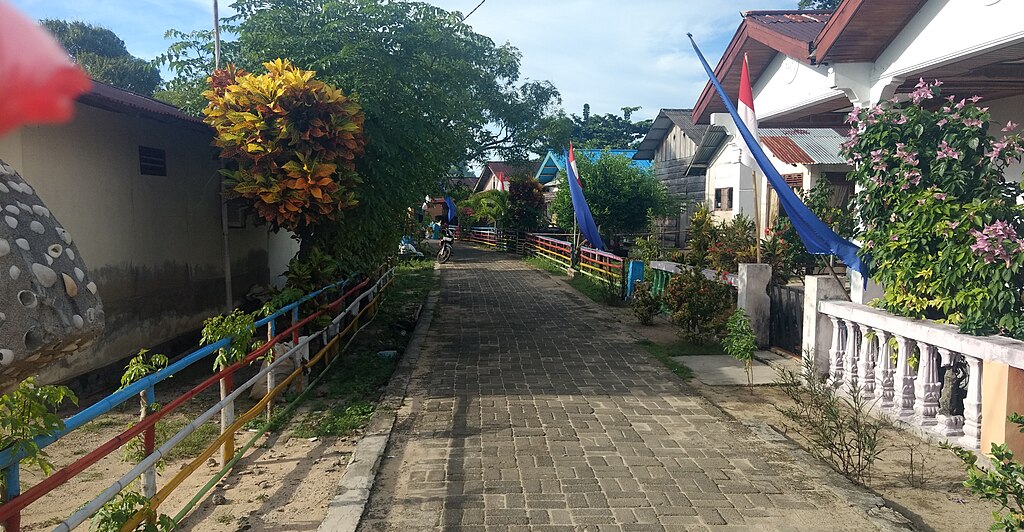
One of the small cobbled village streets on Bunaken Island. Lunaloop, CC BY-SA 4.0, via Wikimedia Commons
Visiting Tips:
- It’s advisable to dive with a certified dive operator to ensure safety and responsible diving practices.
- Follow proper reef etiquette, such as avoiding touching or standing on the corals, to help preserve the fragile ecosystem.
- Bring appropriate sun protection, as the tropical sun can be intense, even underwater.
Liang Beach Bunaken. Sakurai Midori, CC BY-SA 3.0, via Wikimedia Commons
Bunaken National Park offers a captivating underwater world for divers and snorkelers alike. Whether you’re an experienced diver or a beginner, this marine sanctuary in North Sulawesi promises an unforgettable exploration of the ocean’s wonders.
From Bali to Manado:
There are non-stop flights from Bali to Sam Ratulangi International Airport (MDC) in Manado, usually taking around 2 hours and 30 minutes. Similarly, you can catch a direct flight from Singapore to Manado, which typically lasts about 3 hours. Keep in mind that flight durations may vary slightly based on the airline and weather conditions.
From Bali to Manado | Complete Guide to Visit Bunaken, North Sulawesi
2. Tangkoko Nature Reserve
Encounter unique wildlife like the tarsier, black macaque, and various birds in this nature reserve.
Opening Hours and Prices:
- Tangkoko Nature Reserve: Open during daylight hours. Entrance fees may apply.
How to Get There:
- Tangkoko Nature Reserve: Drive from Manado, around 2-3 hours.
Tangkoko Nature Reserve, situated in North Sulawesi, Indonesia, is a biodiverse haven known for its unique wildlife and lush rainforest. Here’s a closer look at what makes Tangkoko Nature Reserve a remarkable destination for nature enthusiasts:

Tangkoko National Park. Looking toward Mount Tangkoko, from the sea. Lip Kee Yap, CC BY-SA 2.0, via Wikimedia Commons
Fascinating Wildlife:
Tangkoko is renowned for its diverse range of wildlife, including some species found nowhere else on Earth. Visitors have the chance to encounter the endangered Sulawesi black crested macaque, the tiny spectral tarsier, and numerous bird species.
Sulawesi Black Crested Macaque:
One of the most iconic inhabitants of the reserve is the Sulawesi black crested macaque, also known as the “yaki.” This primate species is native to Sulawesi and is recognized for its distinctive appearance.
Spectral Tarsier:
Tangkoko is also home to the spectral tarsier, one of the smallest primates in the world. Known for its large eyes and remarkable ability to leap from tree to tree, the tarsier is a fascinating creature to observe.
Rich Flora:
The reserve is characterized by lush rainforest, providing a habitat for a wide variety of plant species, including towering hardwood trees, ferns, and orchids. The verdant landscape offers a picturesque backdrop for wildlife viewing.
Hiking and Trekking Trails:
Tangkoko offers well-maintained trails for hiking and trekking, allowing visitors to explore the forest and spot wildlife. Guided tours are recommended to ensure a safe and informative experience.
Night Tours:
For those seeking a unique adventure, night tours in Tangkoko offer the chance to observe nocturnal creatures, including the spectral tarsier, in their natural habitat.
How to Get There: Tangkoko Nature Reserve is located approximately 50 kilometers from Manado, the capital of North Sulawesi. Visitors can hire a local guide or join a guided tour to explore the reserve.
Visiting Tips:
- Wear comfortable clothing and sturdy footwear suitable for trekking in the forest.
- Bring insect repellent to protect against mosquitoes, especially in the evening and at night.
- Follow the guidance of local guides and respect the natural environment and wildlife.
Tangkoko Nature Reserve offers a rare opportunity to witness the incredible biodiversity of North Sulawesi. Whether you’re captivated by primates, fascinated by unique flora, or simply seeking a connection with nature, this reserve promises an unforgettable experience for all who venture into its depths.

Lanscape of Tangkoko Beach. This photo take on Taman Wisata Alam Batuputih (Batuputih Nature Park). North Sulawesi. R.Rahasia, CC BY-SA 4.0, via Wikimedia Commons
Before setting out on your adventure, be sure to consult this Sulawesi travel guide for the latest updates on opening hours and admission fees. Additionally, remember to check with local authorities or guides for any updated information. Enjoy your exploration of Sulawesi!
Photo credit (main picture): Pontohyesi, CC BY-SA 4.0, via Wikimedia Commons
Must See Places in Indonesia | A Guide to the Country’s Best Attractions to Explore and Discover
Get ready to book your stay at Villa Carissa, right in the heart of all the excitement in Seminyak, South Bali!

